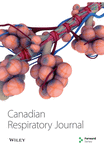Long-Term Compliance with Continuous Positive Airway Pressure in Patients with Obstructive Sleep Apnea
Abstract
BACKGROUND: Continuous positive airway pressure (CPAP) is an effective treatment for obstructive sleep apnea (OSA). However, compliance is a significant problem and has been incompletely assessed in long-term studies.
OBJECTIVE: To assess the long-term compliance of OSA patients with CPAP therapy.
SUBJECTS: Eighty patients who had had a diagnosis of OSA at least four years previously and received a written prescription for CPAP were evaluated.
METHODS: Subjects were identified by reviewing sleep laboratory records. Participants were contacted by telephone and were asked to quantitate their CPAP use (hours per night, nights per week) and to evaluate whether there had been improvement in symptoms. Those who commenced but subsequently abandoned therapy and those who never initiated treatment were questioned about their reasons for noncompliance.
RESULTS: Patient demographics included mean (± SD) age (58±11 years), male sex (70 of 80 patients [88%]) and mean apnea-hypopnea index (70±44 events/h). At the time of the interview (64.0±3.7 months after diagnosis), 43 of 80 patients (54%) were still using CPAP and most reported an improvement in symptoms. Twelve of 80 patients (15%) had abandoned CPAP after using it for 10.1±15.5 months, and 25 of 80 patients (31%) had never commenced therapy after initial diagnosis and CPAP titration. Analysis of scores reflecting initial patient sleepiness revealed a significant association of this symptom with subsequent CPAP compliance.
CONCLUSION: Although many patients with OSA derive subjective benefit from, and adhere to treatment with CPAP, a significant proportion of those so diagnosed either do not initiate or eventually abandon therapy. Initial experience with CPAP appears to be important, reinforcing the need for early education and support in these patients.




